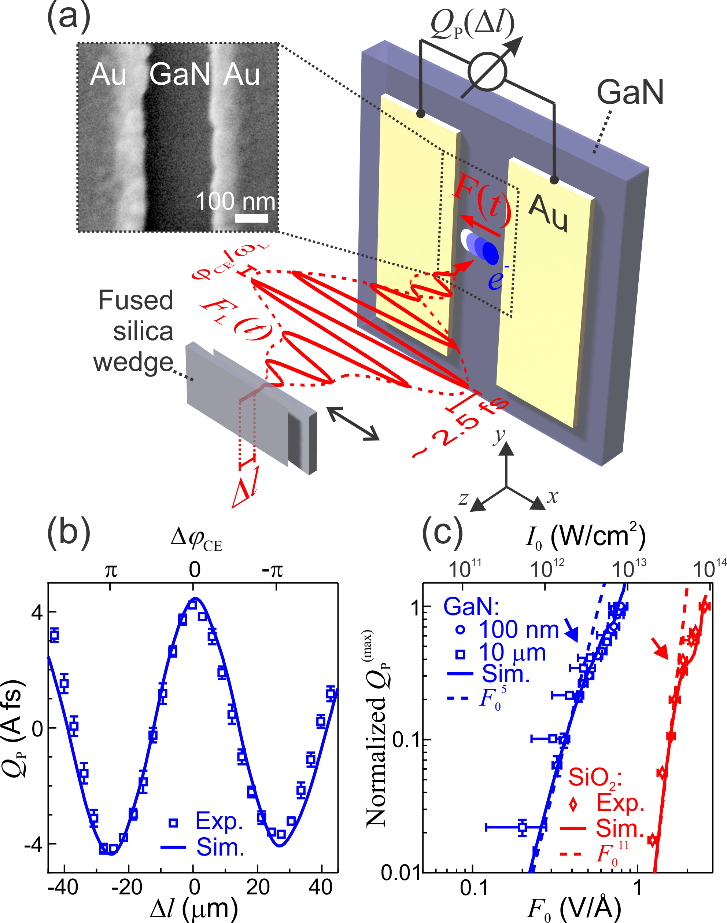Nonlinear interactions between ultrashort optical waveforms and solids can be used to induce and steer electric current on a femtosecond (fs) timescales, holding promise for electronic signal processing at PHz (1015 Hz) frequencies [Nature 493, 70 (2013)]. So far, this approach has been limited to insulators, requiring extremely strong peak electric fields (> 1 V/Å) and intensities (> 1013 W/cm2 ). Here, we show all-optical generation and control of directly measurable electric current in a semiconductor relevant for high-speed and high-power (opto)electronics, gallium nitride (GaN), within an optical cycle and on a timescale shorter than 2 fs, at intensities at least an order of magnitude lower than those required for dielectrics. Our approach opens the door to PHz electronics and metrology, applicable to low-power (non-amplified) laser pulses, and may lead to future applications in semiconductor and photonic integrated circuit technologies.
Here, we demonstrate ultrafast, direct-field control of current at substantially lower fields, in a material with a smaller bandgap (Eg). We have chosen GaN (Eg ≈ 3.4 eV), which has attracted much interest for applications in optoelectronics and high-frequency and high-power electronics due to its high electron mobility, mechanical stability and heat capacity. We show that charge displacement results from the interference between multiphoton excitation channels in presence of field-induced intraband carrier motion and dynamic screening of the optical field. With increasing intensity, we observe a gradual transition from the multiphoton to the tunneling regime, supporting a unified quantum mechanical picture valid in both limits.
Figure 1(b) shows the CEP-dependent fraction QP of the charge per pulse collected by the unbiased Au electrodes as a function of ∆l and ∆ϕCE. Here, FL(t) was applied perpendicular to the electrodes, along the x-axis; Fig. 1(a). The measured signal QP reverses its sign periodically with CEP. Inverting the optical field ( CE ∆ = ϕ π ) reverses the direction of the measured charge displacement: the instantaneous electric field of the laser pulse generates and controls QP, similar to the case of an insulator.

Fig1
To clarify the physical mechanism behind the generated current, we compared our experimental data with the results of quantum-mechanical (QM) simulations based on the numerical solution of the time-dependent Schrödinger equation (Supplement 1, Sections 3–5). We considered optical transitions between three valence (VB) and two conduction bands (CB) for crystal momenta kx along the Γ–M direction of the Brillouin zone (BZ) [Figs. 4(a) and S1 in Supplement 1]. The electrodes orientation relative to the crystalline axes of the (0001) surface does not play an important role, since bands are isotropic in the vicinity of the Γ-point [20] and the considered field amplitudes are too low for most charge carriers to reach the BZ boundaries.
上一篇: 晶圆清洗洁净室整理
下一篇: 半导体紫外光电探测器的研究综述